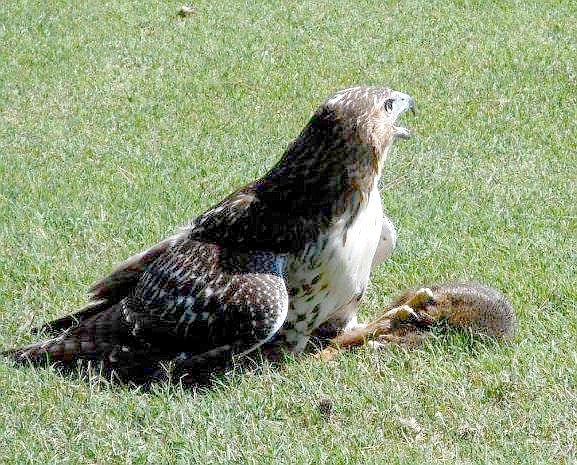Lynn Atkins
Although the golfers who use it may not notice, a change is happening at Berksdale Golf Course. The course is becoming greener as staff works toward a certification as an Audubon Cooperative Sanctuary Program for Golf Courses.
It started when Kingsdale assistant superintendent Wendy Barnes saw the program on a professional golf superintendents' website in 2012. Barnes has a degree in sustainable horticulture, so she knew Berksdale could qualify, but she didn't pursue the certification until Golf Maintenance Director Keith Ihms asked her about it. She started the paperwork in late 2015.
The program looks at both wildlife and habitat management, as well as chemical use, water use, water quality, outreach and education. The course was already well within most of the parameters, Barnes said, so it is just a matter of documenting it all.
"At all the Bella Vista courses, we try to be good stewards of nature," she said.
The habitat of a golf course is inter-related, she explained. So converting some of the landscaping to native plants has many benefits.
"It's a win/win," she said.
For example the areas that have been planted with native wildflowers will not require as much maintenance as the fairways, although every bit of the golf course gets some maintenance. Native grasses won't require as much water as the manicured areas. So the native areas are money savers and look good, too.
Everything about the courses requires balance, she said.
While the certification process helps the area wildlife, there's some wildlife around the courses that will damage the playing surface. The staff constantly battles armadillos and moles, for example. The armadillos can be discouraged by killing the grubs they feed on. Because the grubs also damage the roots of the grass, chemical sprays are used on the fairways.
Moles are more difficult, Barnes said, but moles have some natural predators, such as foxes, that can be encouraged by leaving more areas natural.
There have been more moles than usual the last few years, she said, but that's probably because of the mild winters.
Early in the morning, well before golfers arrive en masse, the maintenance staff sees the wildlife, even an occasional coyote or deer, she said. She's also seen roadrunners.
Several golfers have picked up a wildlife score card in the pro shop. They record what kind of animals they see on the course. They have reported several species of birds, as well as squirrels and the occasional fox.
Some golfers record so much wildlife, you have to wonder if they have time to play, Jay Meary in the Kingsdale Pro Shop said. But so far, no one has complained.
Certain times of the year, both the staff and the players see migratory birds. There are even bald eagles that pass through in the spring and fall, Barnes said.
Eva White has seen the bald eagles. Over the past months, she has seen blue herons, yellow breasted warblers, finch, red-winged black birds and red-tailed hawks. She's a bird watcher as well as a golfer.
Alice Zelahy mostly sees "fat squirrels," but she likes the idea of wildlife.
"There used to be too many geese," Joe Waugh said, but in recent years the numbers are down and that's a good thing. A few years ago the city launched a program to limit reproduction of geese by oiling eggs in nests. That program has proven successful.
A foursome preparing to go out on the course listed coyotes, deer, snakes and black squirrels as recent sightings.
"We're all in favor of it, as long as it doesn't change the golf," Ted Thompson said, speaking for the foursome.
Barnes designed several areas of landscaping on Berksdale over the years, but now she's replacing some of her own work with native species. Because northwest Arkansas is on the edges of several different ecosystems ranging from the desert Southwest to the Great Plains, there's a variety of native plants to choose from.
She added several bat boxes around the course, but is a little disappointed that the bats haven't yet moved in. Sometimes it takes a while, she said, but if the bats move in, they'll help control flying insects.
Sue Jacobson is excited about the bat boxes. "If you live in Bella Vista, you're always looking for wildlife," she said.
When Barnes started at the course, nine years ago, the growth along the creeks was mowed closely. Lately, they've been letting it grow a little. It's a small change, but now there are many more frogs, salamanders, and crawdads living on the course.
It may take three years to reach the full certification, partly because of the time it takes to compile all the paperwork, but Barnes is convinced that Berksdale will qualify. When that happens it will be only the second Arkansas golf course to earn the certification.
General News on 04/26/2017
